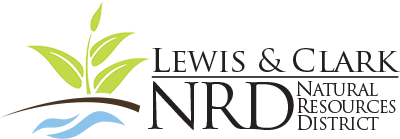END OF IRRIGATION SEASON CONSIDERATIONS

As the 2025 irrigation season concludes, it’s an ideal time to prepare for next year. A proactive approach—including an end-of-season checklist, system upgrades, and exploring cost-share opportunities—can help improve efficiency and reduce downtime.
Maintenance Checklist for Winter Preparation
A thorough end-of-season inspection helps prevent costly breakdowns during the next growing season. Recommended tasks include:
- Gearboxes: Run the pivot and listen for unusual sounds indicating worn bearings.
- Wheels and Tires: Inspect for damage, tighten lug bolts, inflate tires, and replace if necessary.
- Traveler System: Listen for squeals or knocks that may signal mechanical issues.
- Distribution System: Turn on water and walk the system to check for leaks, faulty seals, and worn sprinkler heads.
- Pressure Gauges: Ensure gauges return to zero when relieved and reflect pressure changes accurately.
- Control Systems: Test all major controls and interlocks, including end-gun switches, park settings, cornering arm valves, and pump interlocks.
- GPS Yield Maps: Use mapping data to guide irrigation design and management improvements.
Minor repairs now can save time and money later, especially compared to the cost of replacing an entire system.
Technology Upgrades to Consider
Modern irrigation technologies offer powerful tools for improving water use and crop health:
- Variable Rate Irrigation (VRI): Enables zone-specific application of water, nutrients, and pesticides. Grid sampling helps define water management zones for optimal performance.
- Soil Moisture Sensors: Measure water levels at various depths and locations. Place sensors in each soil type to manage irrigation more precisely.
- Flow Meters: Monitor water flow rates to detect inefficiencies and conserve resources. Accurate readings support both irrigation and chemigation.
- Drone Technology: Allows remote monitoring of equipment, identifying leaks and inefficiencies without entering the field. This saves time and enables adaptive management.
Support and Funding
Your local Natural Resources Conservation Service (NRCS) offers cost-share programs for VRI systems, soil moisture sensors, flow meters, and other irrigation enhancements.
To learn more about improving your system’s efficiency or accessing funding, contact your local UNL Extension office, irrigation water specialist, NRCS, or LCNRD at (402) 254-6758.
